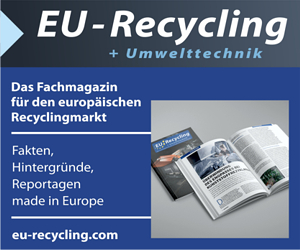David Wilson is director of compliance at Vanden Recycling, experts in plastics recycling. He shares his thoughts on how emerging data from the 2023 compliance year may have deep strategic implications for UK recycling.
As we get to see some data about how the nation’s plastic packaging recycling effort went last year, it’s clear it’s mixed news.
On the upside the data indicates that we’ll beat the national plastics packaging recovery target comfortably, perhaps by up to 7%. While this is good news, we need to remember the recovery target remains at 61% of the total packaging used in the UK for the 3rd year in a row. This is the first time that targets have been maintained at the same rate for so long, having seen year on year increases for a couple of decades. Given recovery adds cost, it’s easy to read the politics of this as the Government desperately tries to curb inflation, sacrificing the drive to a circular economy in the process.
Digging slightly deeper into the data, we can see another number that’s stalled, that’s the amount of material recycled in the UK rather than overseas.
For a couple of decades, up to 2019, we exported about two thirds of the plastic packing waste we collected for reprocessing. That year, we also saw the value of packaging recovery notes hit triple figures for the first time. The next year, the rate of domestic reprocessing increased rapidly and in 2021 domestic reprocessing beat exports in the May of that year for the first time.
The startling progress of domestic reprocessing was short lived and by December 2022, we were seeing exports once again beating UK reprocessing albeit by a lower margin than previously and this trend persisted in 2023. It looks like we’ll end 2023 with roughly 620KT exported for reprocessing, of which 580KT reprocessed domestically.
There are many reasons for this stall: energy, water and water disposal costs, labor costs, scarcity and the fact that investment in this area is hard. Recycling needs investment in the same style as public utilities but without the security of long-term take-off agreements, a circle that is hard to square.
To some extent we might say “so what?”. Why don’t we just keep exporting and police overseas re-processors more thoroughly to ensure equivalent environmental standards, some countries do this with real rigour and the UK could too. Needless to say, there’s a problem with that approach. This quarter, coming before the EU Commission, is draft regulation to ban export of plastic waste going to non-OECD destinations for reprocessing.
Again “so what?”, that sounds like an EU issue. The thing is markets are globally linked. The UK uses not only those same non-OECD re-processors but many EU re-processors too. So, when the EU cut themselves off from those non -OECD markets EU material will saturate EU re-processors, taking up capacity that is currently used by the UK. Add to this, let’s not forget, is a UK Govt manifesto commitment to ban plastic waste exports to those same non-OECD markets. It begs the question, what happens to the half of our plastic packaging waste we currently export when those bans come into effect?
We need a real strategy. Packaging producers will soon start paying more for recycling than they have ever done before. Already in 2023, once the final numbers are in, we’ll likely see a record amount spent by producers through the packaging recovery note system. The question is to what effect? Support through packaging recovery notes is essentially revenue rather than capital for many recycling companies. It’s used to buy and subsidise the costs of material to reprocess mainly through supporting collections. As any finance director will tell you, you don’t spend revenue on capital infrastructure and if you do to any great degree you’ll go bust. So, how do we build the infrastructure we’ll need?
If export bans do, in fact, materialise in the EU and UK, and it seems certain one will in the EU, we need to think about some further policy. We’ve been so focused on Extended Producer Responsibility for so long that we’ve lost sight that the recovery element won’t simply just happen.
The UK has shown it can do a co-ordinated policy with the 3 legs of consistent collections pushing volume for recovery, EPR helping make plastic material simpler to recycle and the plastic tax stimulating demand. It’s becoming obvious that a 4th leg is needed, an industrial policy to drive investment into recovery infrastructure. If we’re going to restrict markets in an already volatile industry, we need to drive investment in parallel. We’re blessed with very smart HM Treasury staff. If they can lead globally on plastics taxes how about they have a think about driving the investment this sector needs?
Source: Media Matters / Vanden Recycling





